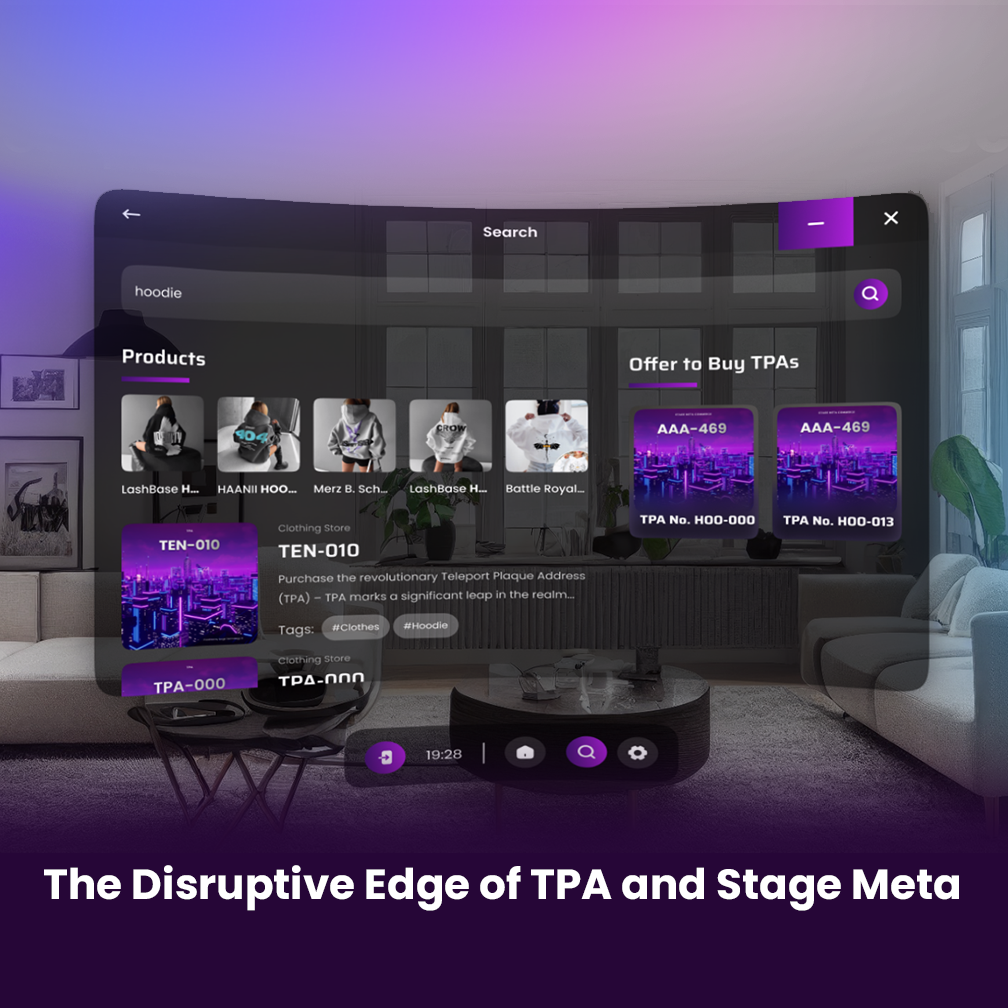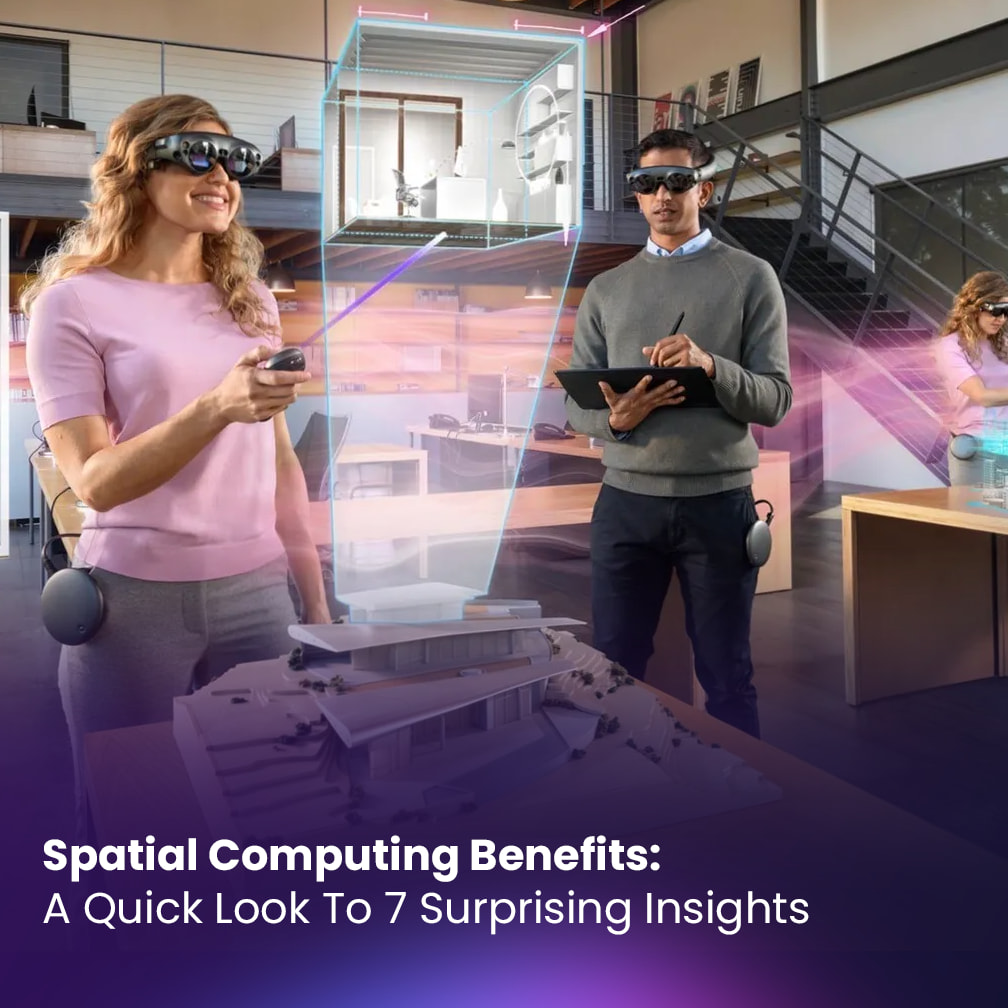Spatial Computing in the Next Decade: The Role of TPA and Stage Meta

Table of contents
- Introduction
- What is Spatial Computing?
- TPA: The Unique Address for Spatial Computing
- The Future with Spatial Computing and TPA
- Conclusion
- FAQs
- What exactly is Spatial Computing?
- How has spatial computing evolved from traditional computing?
- What is TPA, and why is it important for Spatial Computing?
- Can you give examples of how Spatial Computing, driven by TPA and Stage Meta, could transform industries?
- What challenges does Spatial Computing face, and how do TPA and Stage Meta address them?
- Is investing in TPA a good idea?
Introduction
Spatial Computing is transforming traditional computing paradigms, thus creating a new way to interact with the digital world by merging it with our physical reality. This new technology includes augmented reality (AR), virtual reality (VR), and mixed reality (MR), offering immersive experiences that once seemed the stuff of science fiction. In the heart of this revolution lies the Teleport Plaque Address (TPA) and Stage Meta. Let’s explore the Role of TPA and Stage Meta in shaping the future of spatial computing for the next decade.
What is Spatial Computing?
At its core, spatial computing is an advanced technology that integrates the physical and digital worlds. Which allows for interactions with digital content in our physical space. Imagine wearing a headset that adds digital content onto your real world environment, or a world where your living room becomes the stage for a virtual conference. Ultimately, this is not science fiction but the reality of spatial computing.

The Evolution of Spatial Computing
In the past decade, we’ve seen a seismic shift from personal to mobile computing. Furthermore, the journey from personal to spatial computing has been marked by significant discoveries. In the 90s, personal computing brought technology into our homes. The advent of mobile computing allowed technology to move with us.
Today, we stand on the cusp of the next big leap: Spatial Computing.
Unlike its former, spatial computing blurs the lines between the physical and digital worlds, creating a seamless interface for interaction. This technology allows for a more natural and intuitive engagement with digital content, as it can understand and respond to the physical space around the user.
TPA: The Unique Address for Spatial Computing
At the core of making spatial computing accessible and easy to use is the Teleport Plaque Address (TPA). TPA serves as a unique address, a revolutionary system designed to navigate and interact within digital and physical spaces smoothly. As a matter of fact, we can compare TPA to the “.com” boom back in the 90s.
With TPA, users can pinpoint locations in 3D environments, simplifying the complexities of spatial computing into a user-friendly format. TPA isn’t just an addressing system; it’s pivotal for digital ownership and assets in spatial computing.
The Role of TPA Stage Meta
Stage Meta exemplifies the practical application of TPA, showcasing its versatility. This platform enables users to buy, sell, trade, develop, and activate TPAs, ultimately bridging digital and physical realms. Indeed, it’s a testament to the vision of TPA as more than a navigation tool; it’s an integral part of a broader ecosystem aimed at fostering a more connected, accessible, and also innovative digital world.
Impact on Various Sectors
Certainly, spatial computing, powered by TPA and Stage Meta, has the potential to revolutionize several sectors, among them:
- Retail: Transforming shopping experiences through virtual try-ons and immersive product discovery.
- Education: Making learning more engaging with interactive, 3D visualizations.
- Real Estate: Offering virtual tours, allowing prospective buyers to explore properties from anywhere in the world.

The Future with Spatial Computing and TPA
Looking ahead, the integration of Spatial Computing into our daily lives seems inevitable. The potential for deeper audience engagement, immersive discovery, and shared connections is immense. Spatial computing will revolutionize retail, education, entertainment, and much more, offering enriched, immersive experiences that today are only beginning to be imagined.
TPA stands as a pivotal force in this transformation, simplifying digital interaction and enhancing accessibility. Its development is a key driver of innovation in spatial computing. Setting new standards for how we connect with the digital landscape. As we advance, TPA’s intuitive and user-friendly design is expected to make spatial computing more accessible and appealing to a broader audience, fundamentally changing how we perceive and interact with our digital surroundings.
Challenges and Opportunities
While the promise of spatial computing is immense, challenges remain. Particularly the need for widespread adoption, ensuring user privacy, and overcoming technical hurdles such as latency and computational power. TPA and Stage Meta tackle challenges, paving the way for ubiquitous spatial computing akin to today’s internet.
Investing in the Digital Space
TPA is not just an addressing system but a valuable digital asset. With a limited number of addresses available, securing a TPA today could be a wise investment for tomorrow. TPA integrated with Stage Meta allows users to earn through participation, highlighting spatial computing’s economic potential.

Conclusion
Firstly, the next decade promises an exciting era of spatial computing, with TPA and Stage Meta at its heart. This technological leap forward offers a glimpse into a future where digital and physical worlds coalesce, offering new dimensions of interaction and experience. Therefore, as spatial computing continues to evolve, TPA’s role in navigating this new landscape will be crucial, heralding a future that is both innovative and boundless.
In conclusion, we are not just spectators in this journey but active participants, shaping the future of spatial computing. The convergence of TPA’s unique addressing system with the immersive capabilities of spatial computing paves the way for a more connected, interactive, and enriched world, ready to be explored and experienced by all.
FAQs
What exactly is Spatial Computing?
Spatial Computing is a cutting-edge technology that merges the digital and physical worlds, allowing us to interact with digital content in our physical surroundings. This includes augmented reality (AR), virtual reality (VR), and mixed reality (MR), enabling immersive experiences that blend digital elements with our real-world environment.
How has spatial computing evolved from traditional computing?
Spatial computing represents the next significant leap in computing technology, following the transition from personal to mobile computing. It differentiates itself by providing a seamless interface for interaction between the physical and digital realms, making engagement with digital content more natural and intuitive.
What is TPA, and why is it important for Spatial Computing?
TPA (Teleport Plaque Address) is a revolutionary system that acts as a unique address for navigating and interacting equally in both digital and physical spaces in the spatial computing era. It simplifies accessing locations in three-dimensional environments, making spatial computing more accessible and user-friendly.
Can you give examples of how Spatial Computing, driven by TPA and Stage Meta, could transform industries?
Spatial computing has the potential to revolutionize various sectors, for example: in retail, it can enhance shopping experiences through virtual try-ons; in education, it can make learning more interactive with 3D visualizations; and in real estate, it allows for virtual tours of properties from anywhere in the world.
What challenges does Spatial Computing face, and how do TPA and Stage Meta address them?
The challenges of spatial computing include the need for widespread adoption, user privacy concerns, and technical obstacles like latency. TPA and Stage Meta tackle these issues by simplifying navigation in spatial environments, accordingly creating a platform that bridges digital and physical realms effectively.
Is investing in TPA a good idea?
Investing in TPA is seen as a wise decision for the future, as it represents a valuable digital asset within the burgeoning field of spatial computing. With a finite number of addresses available, securing a TPA now could lead to significant benefits as the technology and its applications continue to grow and evolve.








